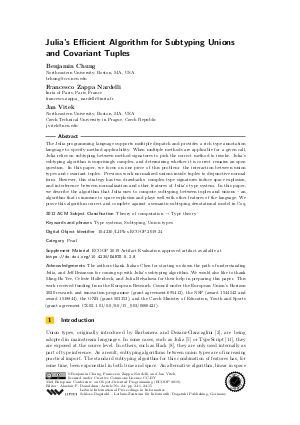LIPIcs.ECOOP.2019.24.pdf
- Filesize: 0.58 MB
- 15 pages

 Creative Commons Attribution 3.0 Unported license
Creative Commons Attribution 3.0 Unported license






Feedback for Dagstuhl Publishing